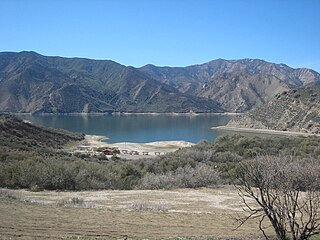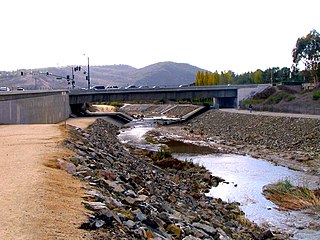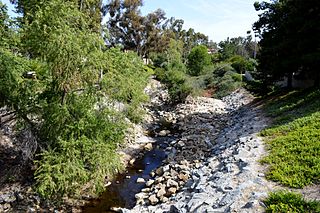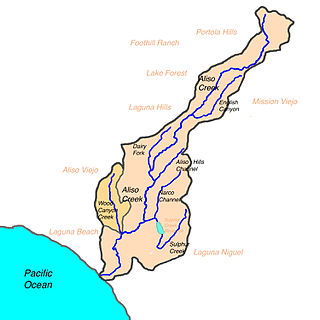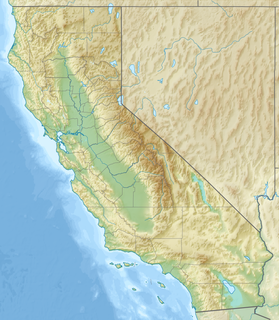| Emerald Canyon | |
|---|---|
| Country | United States |
| State | California |
| Physical characteristics | |
| Source | San Joaquin Hills |
| - coordinates | 33°35′34″N117°46′49″W / 33.59278°N 117.78028°W [1] |
| - elevation | 955 ft (291 m) |
| River mouth | Pacific Ocean |
| - location | Emerald Bay, Laguna Beach |
| - coordinates | 33°33′04″N117°48′28″W / 33.55111°N 117.80778°W Coordinates: 33°33′04″N117°48′28″W / 33.55111°N 117.80778°W [1] |
| - elevation | 0 ft (0 m) |
| Length | 3.46 mi (5.57 km) |
Emerald Canyon is a canyon and watercourse in Laguna Beach, Orange County, California, which drains a section of the San Joaquin Hills 1.5 miles (2.4 km) northwest of central Laguna Beach. Emerald Canyon Creek, about 3 miles (4.8 km) long, originates at the summit of the range near SR 73 (the San Joaquin Hills Toll Road) and flows southwest under the Pacific Coast Highway into Emerald Bay. [2]

Laguna Beach is a seaside resort city located in southern Orange County, California, in the United States. It is known for a mild year-round climate, scenic coves, environmental preservation, and an artist community. The population in the 2010 census was 22,723. As per population estimate in July 2017 the total population of Laguna Beach city was 23,174.

Orange County is a county in the Los Angeles metropolitan area in the U.S. state of California. As of the 2010 census, the population was 3,010,232, making it the third-most populous county in California, the sixth-most populous in the United States, and more populous than 21 U.S. states. Its county seat is Santa Ana. It is the second most densely populated county in the state, behind San Francisco County. The county's four largest cities by population, Anaheim, Santa Ana, Irvine, and Huntington Beach, each have a population exceeding 200,000. Several of Orange County's cities are on the Pacific Ocean western coast, including Huntington Beach, Newport Beach, Laguna Beach, Dana Point, and San Clemente.

California is a state in the Pacific Region of the United States. With 39.6 million residents, California is the most populous U.S. state and the third-largest by area. The state capital is Sacramento. The Greater Los Angeles Area and the San Francisco Bay Area are the nation's second and fifth most populous urban regions, with 18.7 million and 9.7 million residents respectively. Los Angeles is California's most populous city, and the country's second most populous, after New York City. California also has the nation's most populous county, Los Angeles County, and its largest county by area, San Bernardino County. The City and County of San Francisco is both the country's second-most densely populated major city after New York City and the fifth-most densely populated county, behind only four of the five New York City boroughs.
The canyon is located inside Laguna Coast Wilderness Park, and has trails for hiking and mountain biking. However, it is only accessible from the north (uphill) end, as the lower part terminates in private property. A point of interest in the canyon is the 20-foot (6.1 m) high Emerald Canyon Falls, which only flows after periods of heavy rain. [3]

Laguna Coast Wilderness Park is a 7,000-acre (2,800 ha) wilderness area in the San Joaquin Hills surrounding Laguna Beach, California. This park features coastal canyons, ridgeline views and the only natural lakes in Orange County, California. Trails are maintained for hiking and mountain biking with a wide range of difficulty, from beginner to expert. Most trails gain in height, reaching a maximum of 1,000 feet (300 m) in elevation. Several trails lead to downtown Laguna Beach.
Emerald Canyon has been historically known as Mayate Canyon and Nigger Canyon. [1]


